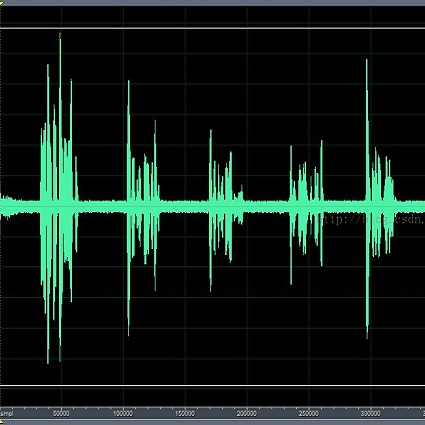In this paper, we investigate the viability of a variational U-Net architecture for denoising of single-channel audio data. Deep network speech enhancement systems commonly aim to estimate filter masks, or opt to skip preprocessing steps to directly work on the waveform signal, potentially neglecting relationships across higher dimensional spectro-temporal features. We study the adoption of a probabilistic bottleneck, as well as dilated convolutions, into the classic U-Net architecture. Evaluation of a number of network variants is carried out using signal-to-distortion ratio and perceptual model scores, with audio data including known and unknown noise types as well as reverberation. Our experiments show that the residual (skip) connections in the proposed system are required for successful end-to-end signal enhancement, i.e., without filter mask estimation. Further, they indicate a slight advantage of the variational U-Net architecture over its non-variational version in terms of signal enhancement performance under reverberant conditions. Specifically, PESQ scores show increases of 0.28 and 0.49 in reverberant and non-reverberant scenes, respectively. Anecdotal evidence points to improved suppression of impulsive noise sources with the variational end-to-end U-Net compared to the recurrent mask estimation network baseline.
翻译:深网络语音增强系统通常旨在估计过滤面罩,或选择跳过直接操作波形信号的预处理步骤,从而可能忽视高维光谱-时空特征之间的关系。我们研究在传统的 U-Net 结构中采用概率性瓶颈,以及放大变异,利用信号对扭曲率和感知模型分数对一些网络变异器进行评估,包括已知和未知的噪音类型以及回响。我们的实验表明,为了成功地增强端对端信号,需要使用拟议系统中的剩余(跳动)连接,也就是说,无需过滤面罩估计。此外,这些实验还表明,在反动性条件下,变异U-Net结构在信号增强性能方面略优于非变异性版本。具体地说,PESQ的分数显示,在回动和未知的噪音类型以及静态网络的变异性源之间,静态和静态网络的变异性基数分别增加了0.28和0.49,与静态网络的变异性基点相比,AVER-imal-deal-deal-deal-deal-visurvial-visual-visual-visual-visual-visual-visual-visual-visual-visual-visual-visual-visual-visual-visual-visual-visual-se-se-visubal-vis比。




